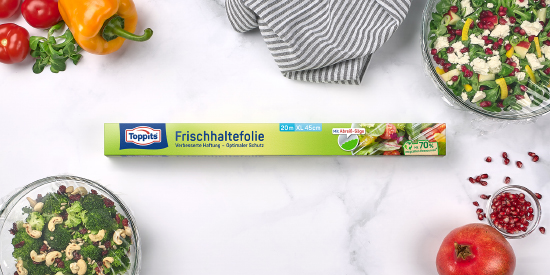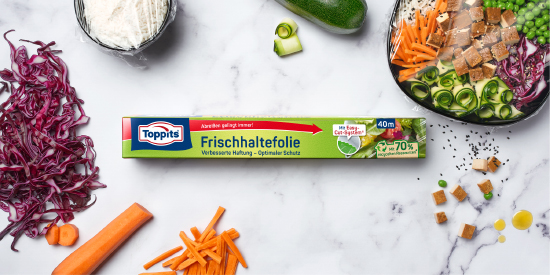Proper disposal of cling film
With materials that come into contact with food, it is sometimes not entirely clear which waste bin they should go in. Generally speaking, plastic packaging goes in the plastics recycling bin. The best way to find out how to dispose of cling film that is not too soiled is to contact your local waste disposal company. As a rule of thumb, if only packaging is collected (as is the case in Germany with the yellow bin/yellow sack), cling film should go into the non-recyclable waste bin. If all types of recyclable materials, such as metals and plastics, are collected, the cling film can go into the recyclable plastics bin.
When should cling film be put in the non-recyclable waste bin?
If recyclable waste is not collected separately in your area or if the cling film is dirty, it is better to dispose of it with the non-recyclable waste. Cling film can be soiled, for example, by greasy food residues that stick to the film. If this is the case, specialised waste management companies recommend disposing of cling film with the non-recyclable waste, since the film, which is heavily soiled with food residues, would otherwise be separated out at the waste sorting plant during the recycling process and sent to an incineration plant anyway.
Toppits® cling film - sustainable use and disposal
Sustainability is an important issue related to the use of cling film and other packaging materials. Toppits® cling film is made with 35% recycled material. These materials include organic residues from the food cycle that are safe for storing food. You can find out more about this and the mass balance approach we use here. With regard to sustainability and recycling, there will be further developments in the future - our goal is to constantly increase the proportion of recycled material that we use. Disposing of cling film correctly and conscious use of this practical everyday kitchen aid helps to constantly increase the sustainability of these products and makes a large and important contribution to the circular economy.

 Deutsch
Deutsch English
English
